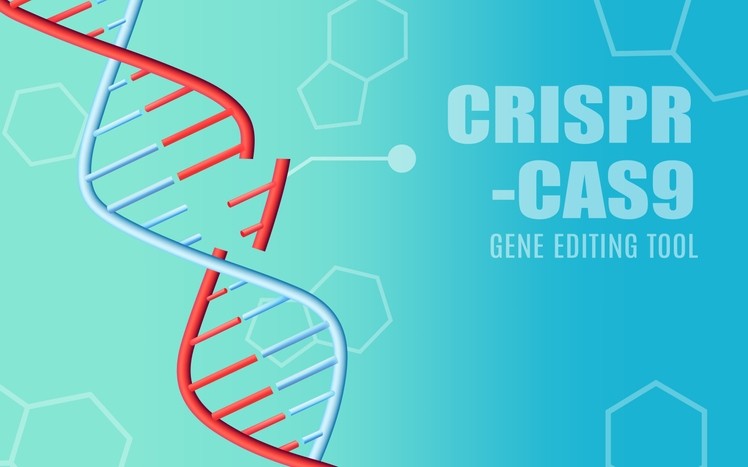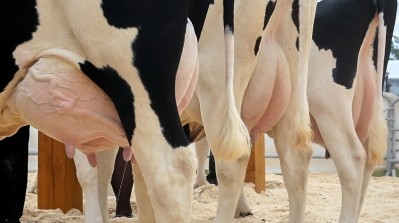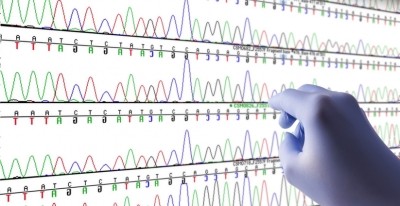Non-GMO advocates hail 'first open source detection test' for a gene-edited GM crop

“This advance resolves doubts regarding the feasibility of extending the regulatory approach currently employed for recombinant DNA-based GMOs to genome-edited organisms,” said the scientists behind the study. The paper summarizing their findings has been published in Foods.
The term ‘gene editing’ or ‘genome editing’ is often used to refer to new genetic engineering techniques that make it possible to obtain new traits to plants without adding any foreign genetic material. The most prominent technique is CRISPR-Cas.
Those opposed to such new techniques say that, besides intended changes, gene editing also causes unintended genetic alterations that can affect the products’ safety for consumers and the environment. They argue that the long-term health and environmental impact of GM crops engineered with gene editing is as yet untested.
To date, SU Canola and Calyxt’s High Oleic Soybean are the only two gene-edited GM crops to have been commercialized. They are only grown in North America.
A consortium led by Dr John Fagan at the Health Research Institute in Iowa, in the US, carried out the research.
Their work was funded by NGOs Greenpeace European Unit and Greenpeace Germany, and the Sustainability Council of New Zealand along with associations for non-GM foods – VLOG in Germany, ARGE Gentechnik-frei in Austria and the Non-GMO Project in the US. Also lending financial support were the US Organic and Natural Health Association; organic food and farming association, IFOAM Organics Europe and Austrian retailer, SPAR.
The method is reported to detect SU Canola, an oilseed rape variety engineered by the American gene-editing company, Cibus, to withstand certain herbicides. Environment Agency Austria (Umweltbundesamt), a member of the European Network of GMO Laboratories, has validated the method, which meets all EU legal standards, said the organizations.
EU countries, using this breakthrough test, can carry out checks to prevent this unauthorized GM crop from entering EU food and feed supply chains illegally, said the groups behind the development. Until now, EU countries were unable to test their imports for the presence of this GM canola which is grown in parts of the US and Canada, they claimed.
GMO crops regulation debate
The new test shows that EU GMO legislation can also be applied to new types of GMOs produced through gene editing, said VLOG and the other non-GMO advocates involved.
The European Court of Justice (ECJ) ruled two years ago that gene-edited organisms fall under the EU’s GMO laws, and that excluding new GMOs from the regulations would go against the purpose of the legislation. It also said this would fail to respect the precautionary principle that is enshrined in the EU’s founding treaties and is the basis for the EU’s food safety rules. The ruling was slammed by the EU ag, biotech and feed sectors. They said the ECJ judgement would damage the EU on innovation and competition grounds.
Weighing in on that, the experts participating in this work, remarked:
“We have developed a sensitive, GMO regulation-compliant method for detecting the first genome-edited crop to be commercialized and suggest that it may represent a general approach for detecting genome-edited organisms. This effort was intended to address the concern voiced by several [stakeholders] that it may not be possible to develop quantitative detection methods for genome-edited plant materials that meet GMO regulatory requirements in jurisdictions such as the EU.
“In particular, they questioned the feasibility of developing quantitative methods that target single-nucleotide edits and that are sufficiently sensitive and specific to meet the requirements of EU law and regulations.
“The research presented here provides a clear answer to these concerns, showing that straightforward qPCR methods can be developed for single-nucleotide edits (SNVs). This, in conjunction with the fact that the scientific community has been using qPCR to quantitatively detect indels and inserted genes for two decades, indicates that it may be possible to develop qPCR methods for virtually any genome edit."
Steering the conversation..
Alexander Hissting, general manager of VLOG, told FeedNavigator today: “At the outset, we were not sure we were going to be successful. The changes made within Cibus’ SU Canola involved only a change in one letter in the whole genetic blueprint so it was a challenge to develop this test.”
What made the difference in this breakthrough was the involvement number of organizations and associations that were dedicated to non-GMO production and had the willingness to begin this journey, he said.
“Proponents will probably claim it is no big deal, that test does not allow the detection of the method that was used to develop the crop, which is correct, but, nevertheless, we can detect whether a certain canola is a Cibus one, altered by genetic modification, or whether it is a Clearfield canola which has the exact same characteristics, and that I think is crucial.”
He said the new research refutes claims by the biotech industry and some regulators that new GM crops engineered with gene editing are indistinguishable from similar, non-GM crops and therefore cannot be regulated. “That argument does not count anymore,” stressed Hissing, adding that the development of the new detection method will steer the conversation in a new direction.
Greenpeace EU food policy director, Franziska Achterberg, commented: “We have shown that GM crops created with gene editing can be detected. There are no more excuses for failing to apply existing GMO safety and labelling requirements to these new GMOs. The European Commission and governments must build on this success and develop screening procedures that can identify gene-edited products.”
Findings disputed
Other organizations, however, disagree with those interpretations of the value of the newly announced gene editing detection method.
"The Greenpeace-sponsored study does not provide any solution to the differentiation of genome edited mutagenesis products in view of their regulatory status worldwide," Garlich von Essen, secretary general, Euroseeds, told us.
All the ‘new’ Greenpeace study shows is that known point mutations, as, for example, in some Cibus oilseed rape varieties, can be detected by quantitative PCR methods, he said.
“This fact is neither new nor has there ever been any scientific doubt about it. Contrary to the claim of Greenpeace, the study and the method presented therein cannot and do not clarify whether the Cibus mutation in the AHAS1C gene is a random somaclonal variation (as it is stated in the citations given in the publication), or whether it is a mutation originating from the genome editing (ODM) technique. It is, therefore, still not possible to determine how the point mutation was generated and, consequently, if the resulting plant is considered a regulated GMO in the European Union.
“In addition, CIBUS, the developer of the respective varieties analyzed in the publication, confirmed to Euroseeds that the varieties were in fact developed from spontaneous somaclonal variation,” said von Essen.
Moreover, the Greenpeace and VLOG backed study does not add anything new to the main observations from the JRC ENGL report, published in March 2019, he added.
"Euroseeds sees its position confirmed that plants with genetic alterations, which could also be the result of conventional breeding methods or natural processes, should not be regulated as GMOs," said the secretary general.
While classical transgenics are regulated similarly as GMOs in all countries, genome edited mutagenesis products are not regulated as GMOs in a growing number of countries, including most South American countries, the US, Australia, and Japan, commented the European seed industry representatives.













